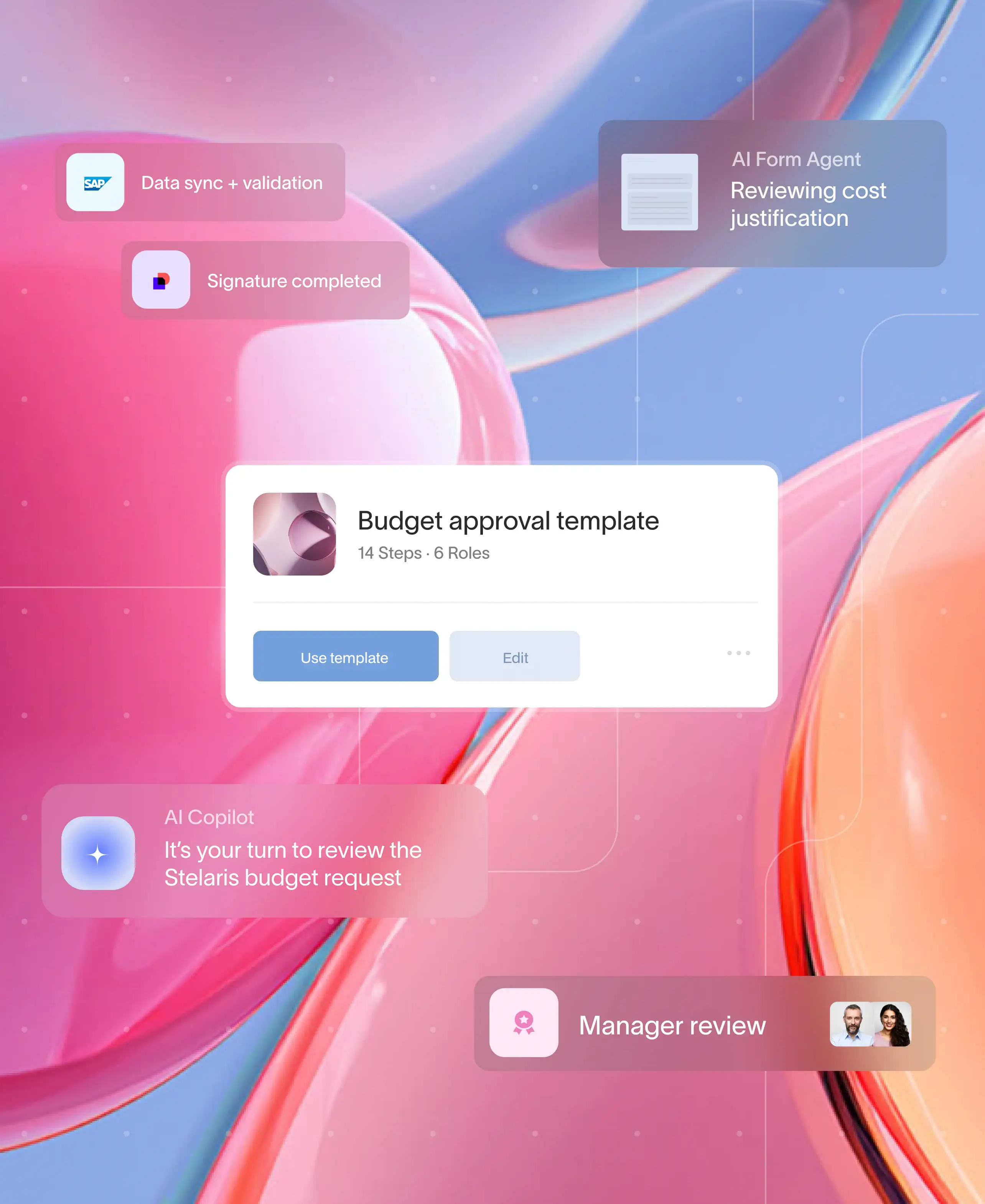
Engaging customers effectively is the heartbeat of any thriving business. Customers expect seamless, efficient interactions that cater to their needs without unnecessary friction. But how can businesses deliver personalized experiences at scale without overextending their resources? Different customer engagement models are used by companies to solve this issue. In this blog we look at the low touch engagement model—a strategy that's redefining customer success by using automation to scale up engagement.
Understanding the low touch customer success model
At its core, it's a strategic approach that minimizes direct human intervention by utilizing automation, self-service tools, and technology-driven solutions. A low touch customer success engagement model empowers customers to navigate their journey independently while still feeling supported and valued. By providing the right resources at the right time, businesses can enhance customer satisfaction without the need for constant hand-holding.
The low touch model isn't about reducing the quality of customer interactions; it's about optimizing them. By automating routine tasks and offering self-service options, companies can focus their resources on high-impact areas that truly require personal attention.
How does the low touch engagement model work?
Implementing a low touch engagement model involves a combination of technology and strategic planning. Here's how it operates:
- Automated customer onboarding processes
- Self-service support resources
- AI-powered chatbots and virtual assistants
- Proactive engagement through data analytics
1. Automated customer onboarding processes
The journey begins with customer onboarding, and automation plays a crucial role here. Instead of manual walkthroughs, businesses use:
- Interactive tutorials: Guided in-app tours that introduce users to key features.
- Welcome emails: Automated sequences that provide helpful tips and resources.
- Video content: Engaging videos that explain how to get the most out of the product or service.
These tools ensure new customers can get up to speed quickly, reducing the need for one-on-one support.
2. Self-service support resources
Self-service support can be a gamechanger if your organization has a vast knowledge base.
- Comprehensive knowledge bases: Detailed articles and guides covering common questions.
- FAQs: Quick answers to frequently asked queries.
- Community forums: Platforms where users can share insights and solutions.
Businesses empower customers to resolve issues independently, enhancing satisfaction and reducing support tickets.
3. AI-powered chatbots and virtual assistants
Artificial intelligence takes customer support to the next level with:
- 24/7 availability: Bots that provide instant responses anytime, anywhere.
- Personalized interactions: Using customer data to tailor responses.
- Escalation protocols: Seamlessly handing over to human agents when necessary.
This ensures customers always have access to assistance without delay.
4. Proactive engagement through data analytics
By harnessing data, companies can anticipate customer needs:
- Usage monitoring: Tracking how customers interact with products to identify patterns.
- Predictive alerts: Notifying customers of potential issues before they arise.
- Personalized recommendations: Suggesting features or services that match customer behavior.
This proactive approach fosters a deeper connection and prevents potential churn.
5 benefits of adopting a low touch customer success model
Transitioning to a low touch engagement model offers numerous advantages:
- Scalability with efficiency: As your customer base grows, maintaining high-quality interactions can strain resources. The low touch model scales effortlessly, handling increased demand without compromising service quality.
- Cost reduction: Automating routine tasks with a low touch model reduces the need for extensive customer support teams, lowering operational costs. Savings can be reinvested into areas that drive innovation and growth.
- Enhanced customer satisfaction: Customers appreciate quick, efficient service. By providing self-service options and immediate support through chatbots, you meet their expectations, increasing loyalty and client satisfaction.
- Focused human intervention: With automation handling routine inquiries, your team can focus on complex issues that truly benefit from human insight, improving overall service quality.
- Data-driven improvements: This allows you to gain insights into customer usage patterns and enables businesses to refine and improve their products, making them more aligned with user needs. Additionally, understanding these customer needs helps create more targeted and effective marketing campaigns, reaching the right audience with the right message.
5 examples of low touch customer success model in action
To illustrate the effectiveness of the low touch model, let's look at some real-world examples:
1. SaaS companies utilizing in-app guidance
Software providers like Trello use in-app tutorials and tooltips to help users navigate their platforms without direct assistance. These features guide users through setup and highlight new functionalities, enhancing the user experience.
2. E-commerce platforms offering self-service portals
Online retailers like Amazon provide extensive help centers and automated support options. Customers can track orders, initiate returns, and find answers to common questions independently.
3. Financial services with automated support
Banks and financial apps like PayPal and Mint use AI chatbots to assist with account inquiries, transactions, and troubleshooting, providing immediate support without long wait times.
4. Telecommunications with virtual assistants
Companies like Verizon and AT&T implement virtual assistants to help customers manage services, troubleshoot devices, and answer billing questions.
5. Healthcare apps using AI-driven symptom checkers
Digital health platforms like WebMD and Ada Health utilize AI-driven symptom checkers that allow users to enter symptoms and receive immediate, personalized health information. These tools provide users with guidance on potential conditions and next steps, enabling self-service and reducing the need for direct interaction with healthcare professionals for initial inquiries.
Low touch vs. high touch: Understanding the differences
There are various differences between high touch and low touch engagement models. While the low touch engagement model focuses on automation and self-service, the high touch customer service engagement model emphasizes personalized, one-on-one interactions. Here's how they compare:
Here’s a table comparing the low touch and high touch engagement models:
Crafting exceptional low touch customer service experiences
Implementing a low touch customer success model requires strategic planning. Here are effective ways to create exceptional customer experiences:
Building a knowledge-rich self-service portal
A self-service portal is the cornerstone of the low touch model. To make it effective:
- Ensure accessibility: Make resources easy to find with intuitive navigation.
- Use clear language: Avoid jargon to make content accessible to all users.
- Incorporate multimedia: Use videos, infographics, and interactive elements to engage users.
Enhancing chatbot capabilities
To maximize chatbot effectiveness:
- Train with real data: Use actual customer interactions to refine responses.
- Maintain a conversational tone: Make interactions feel natural and engaging.
- Regularly update knowledge base: Keep information current to provide accurate assistance.
Personalizing in-app communications
In-app messaging should:
- Be contextual: Trigger messages based on user actions.
- Offer value: Provide helpful information, not just promotional content.
- Allow user control: Enable customers to customize notification preferences.
Utilizing advanced analytics
Data analytics can uncover:
- Usage trends: Identify which features are most popular.
- Engagement levels: Measure how often and how long customers interact with your product.
- Churn indicators: Detect signs of potential customer loss early.
Automating customer journey mapping
Automation tools can:
- Visualize journeys: Provide clear maps of customer interactions.
- Segment customers: Group users based on behavior for targeted strategies.
- Trigger automated actions: Initiate responses based on customer milestones.
Reducing customer churn with low touch strategies
An effective low touch engagement model can significantly reduce customer churn. Here's how:
Proactive support reduces frustration
By anticipating issues and providing resources before problems escalate, customers feel supported and are less likely to leave.
Continuous engagement keeps customers invested
Regular, automated touchpoints remind customers of the value your product or service provides, strengthening their connection to your brand.
Data insights inform retention strategies
Analyzing customer behavior helps identify at-risk users, allowing you to implement targeted retention efforts.
How Moxo bridges the gap between high touch and low touch engagement
At Moxo, we recognize that effective customer engagement isn't about choosing one model over the other—it's about integrating both to meet diverse customer needs.
Enhancing high touch engagement with technology
- Unified collaboration platform: Moxo client portal enables seamless communication between businesses and clients, facilitating personalized interactions.
- Secure document sharing: Easily exchange sensitive information in a secure environment, enhancing trust and efficiency.
Streamlining low touch engagement through automation
- Automated workflows: Reduce manual tasks by automating routine processes, improving efficiency.
- Self-service options: Provide clients with access to resources and tools to manage their needs independently.
- Integration capabilities: Moxo integrates with existing systems to create a cohesive experience.
By leveraging Moxo's solutions, businesses can tailor their engagement strategies, offering the right balance of personalization and efficiency. This balance addresses the needs of high touch vs low touch customers effectively.
Get started with Moxo to develop a mature customer engagement strategy for your business.
Conclusion
The low touch customer engagement model represents a significant shift in how businesses approach customer success. By embracing automation and self-service, companies can deliver efficient, satisfying experiences that meet modern customer expectations. This approach not only enhances customer satisfaction but also drives operational efficiency and scalability.
At Moxo, we're committed to helping businesses navigate this transition. Our platform equips you with the tools needed to implement a customer engagement model bes tailored to your unique needs.
Are you ready to revolutionize your customer engagement strategy?
Get started with Moxo and unlock new levels of customer success.
FAQs
Can the low touch model be customized for different industries?
Yes, the low touch engagement model is versatile and can be tailored to fit various industries, from SaaS to retail, finance, and beyond. By aligning the strategy with specific customer needs and industry standards, businesses can effectively implement this model across different sectors.
How do I balance automation with the need for personal interaction?
A hybrid approach works well. Use automation for routine tasks and reserve human interaction for complex issues or high-value clients. This ensures efficiency without sacrificing personal touch, allowing you to cater to diverse customer preferences.
What technologies are essential for implementing a low touch model?
Key technologies include AI-powered chatbots, CRM systems, data analytics tools, and self-service platforms. Integrating these tools creates a cohesive low touch environment that enhances customer experience and operational efficiency.
How does the low touch model impact customer loyalty?
By providing efficient, convenient support, customers are more likely to have positive experiences, leading to increased loyalty and advocacy for your brand. The ease of access to resources and swift resolution of issues fosters trust and satisfaction.
Is the low touch model suitable for startups?
Absolutely. Startups can benefit greatly from the low touch model as it allows for scaling customer support without significant investment in large teams. Automation and self-service tools enable startups to provide high-quality support while focusing on growth.
How does the low touch model handle complex customer issues?
Complex issues can be escalated to human agents. The model includes protocols for recognizing when human intervention is necessary and ensuring customers receive appropriate support when automation isn't sufficient.





